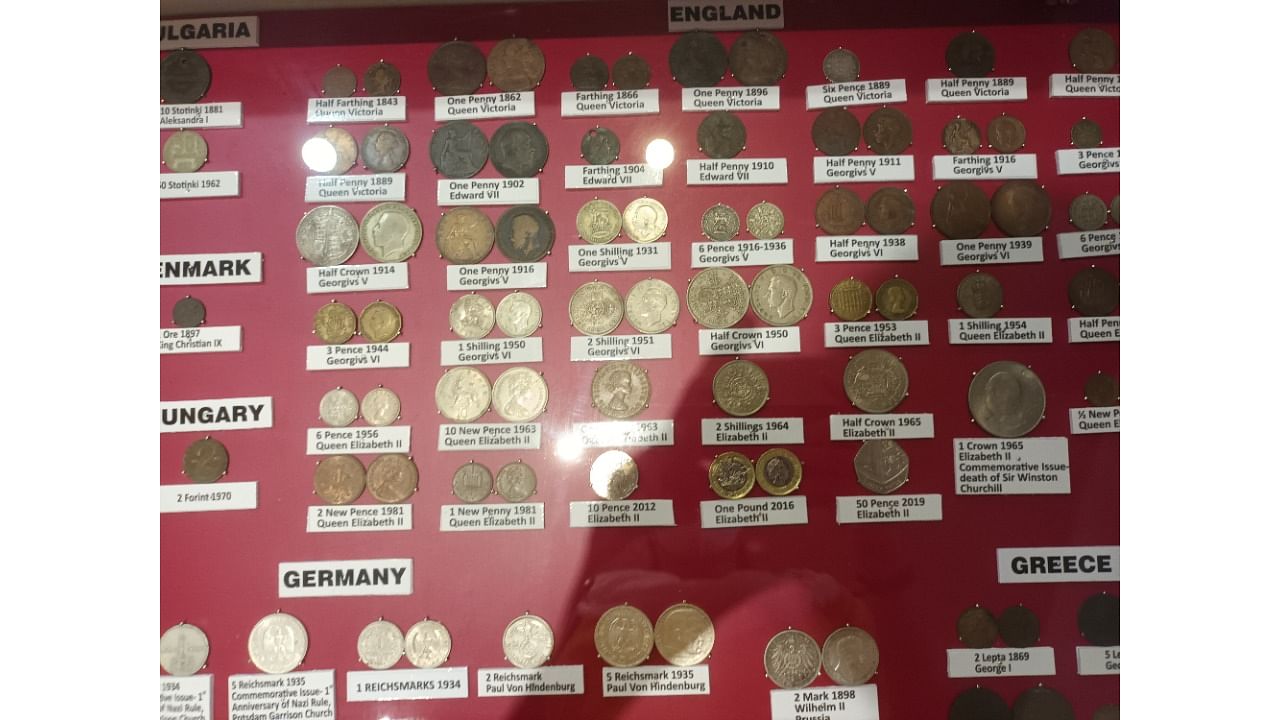
If you like seeing ancient coins and understanding the history through the coins, then Aloyseum, a museum at St Aloysius College in Mangaluru, is the place to be.
Nearly 1,328 coins from over 75 countries are on display. The oldest coin in the gallery of the museum dates back to 211 BC, a Denarius of the Roman Empire.
The rarest and oldest coins are being displayed in the gallery of the museum. In fact, the authorities of the museum have around 4000 coins. Of which, 1328 coins have been sorted, identified and categorised for display, said Kavitha, Curator of the museum.
The majority of these coins were brought from Italy in 1913 by Fr Chiappi when the museum of the Collegio Vida was dismantled. The coins were stored in boxes due to lack of proper security and inability to identify them, she said.
Coins in materials such as gold, silver, copper are on display. There is an explanation in English next to all the coins.
There are five cases for the display of the coins in the museum, categorised into continents of their origin.
Rare coins from 27 European countries are displayed. The oldest coin is from 211 BC, a Denarius of the Roman Empire. The ancient coins are from Roman times representing practically all the Caesars and a coin from the Byzantine Empire.
From Europe, there are coins from France, England, Germany, Greece and other countries. Some of the coins are 10 Centimes of 1853 from Napoleon III, 2 Franc 1871 of Ceres, 5 Centimes 1855 of Napoleon III, 25 Centimes 1904 of Laureate Liberty. A few of the coins of England that are on display are Half Farthing 1843 of Queen Victoria, Half Penny 1889 of Queen Victoria, Half Crown 1914 of Georgivs V, one Penny 1862 of Queen Victoria, One Shilling 1931 of Gerogivs V and so on and from Greece, there are 2 Lepta 1869 of George 1 and others.
Coins of 33 Asian countries belonging to various kingdoms and periods are on display. The oldest coins belong to the Polonnaruwa kingdom of Ceylon called Massa coins. Old coins of Afghanistan, Bahrain, Brunei, Cambodia, Hong Kong, Iraq, Kuwait, Lebanon, Pakistan, Philippines, Nepal, Iran, Indo-China, Ceylon, Japan, Sarawak, Singapore, Qatar, Dubai, Saudi Arabia, Malaysia, Maldives Myanmar, Thailand and other countries are on display.
Coins of Indian princely states of Baroda, Gwalior, Indore, Hyderabad, Kutch, Mysore, Travancore etc are on display. Besides coins belonging to the colonial period of Dutch, Danish, Portuguese, British are also exhibited.
Two Pagoda belonging to 1829-1855 of Travancore, Gold Pagoda of Krishnaraja Wodeyar III belonging to 1799-1868 and others are on display.
Coins from three North American and three South American countries including that of Chile, Mexico, Peru belonging to the 18th-19th centuries are exhibited.
Further, there are coins from seven countries of the African continent including rare coins of Algeria, Zanzibar, Egypt at the gallery in addition to coins from three Oceania countries of Australia, New Zealand and Papua New Guinea.
The coins gallery was inaugurated by St Aloysius Institutions Rector Fr Melwin Pinto on Wednesday. Fr Leo, retired professor of the college, was also present.
Watch the latest DH Videos here: